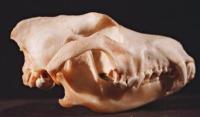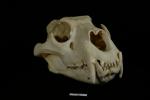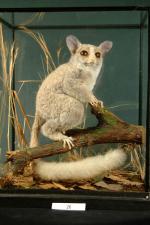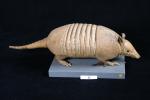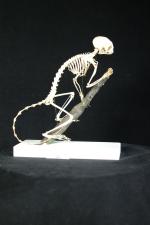
|
The Class Mammalia includes some 4000 species of living mammals assigned to 26 orders. All mammals are endotherms and share three unique features, not found in other animals.
Mammals also have a unique jaw articulation - a single bone in the lower jaw - and their teeth are specialised to fulfil different functions (heterodonts). The classification of mammals is still under debate. In the scheme used here, there are two major groupings:
Evolution of mammals
The great diversity of mammalian families and species represents a number of different evolutionary experiments that appear to have begun with minute, less than 5cm long, and most probably nocturnal, creatures in the Triassic period (195-225 mya).
As mammals radiated, they adapted to feed on all kinds of vegetable material
and vertebrates, as well as the invertebrates thought to have been the
principal diet of their earliest ancestors. Mammalian success may be attributed therefore, at least in part, to
the capacity of their teeth and jaws to adapt:
The refinement of their senses - sight, hearing, touch
and scent - has been instrumental in enabling mammals to adapt:
The different ways that the senses and brains evolved in different species influenced:
As a result the skull and dentition, as well as the limbs, may be said to reveal more about a mammal's life style that any other skeletal feature. The Natural History Collections has therefore acquired an extensive collection of skulls and limbs, as well as skeletons of small mammals, to illustrate courses in mammalian biology. The following web-pages use these skeletons, skulls and limbs:
Photos of our stuffed specimens and living animals
show the outward features that characterize the different families
of mammals and identify individual species.
Monotremes are egg-laying mammals.
They are called monotremes because they have
only one posterior opening, the cloaca into which the rectum and urinogenital sinus both open and
through which gametes, urine and faeces all pass to the outside. The eggs are fertilised internally
and laid in a nest. The young are suckled from mammary glands, which do not have nipples,
but open individually over a large area of the ventral surface of the female.
monotremes lack external ears. The two families of extanct monotremes - the platypuses and
echidnas - have decidely different appearances and life styles. They occur only in Australasia.
|
 |  |
Marsupials and placental mammals
Marsupials and placental mammals give birth to live young.
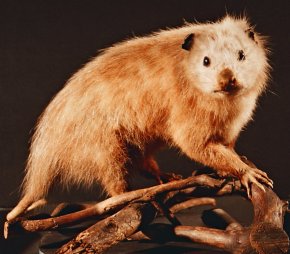 |
Marsupials like opossums give birth to very immature young which develop attached to nipples in an abdominal pouch or 'marsupium'.
The rectum and urinogenital sinus open together at a common, short cloaca. The 266 species of living marsupials are confined to the Americas and Australiasia.
 |
Placental mammals also give birth to live young but their young are nurtured before birth and develop to a relatively mature condition within a uterus. The foetuses are attached to the mother by an allantoic placenta. There is no cloaca and the anus opens separately from the urinogenital tract. There are about 3800 species of placental mammals. They occur in terrestrial and aquatic habitats throughout the world.







